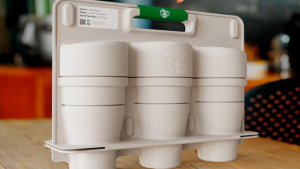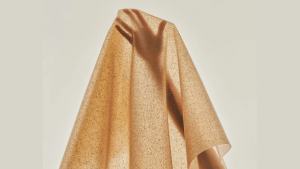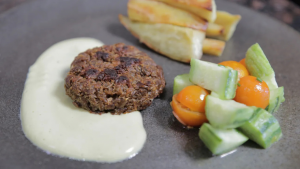Following the success of the inaugural antenna conference, the exhibition is back for the second year in a row. Curated by Design Indaba and Dutch Design Foundation, Antenna will gather some of the world’s most groundbreaking graduates in one place, Klokgebouw, Eindhoven in the Netherlands, from 19 till 27 October to exhibit their innovative ideas, which they will also unpack during the antenna conference on 21 October at Parktheater, Philipszaal from 10am till 3pm.
This year a selection of the antenna speakers from around the globe will be exhibiting their work during Dutch Design Week, which takes place from 19 till 27 October 2019. Some projects will reveal the process behind their concepts and you will get the chance to see some of the physical final works of the designers.
Here are four of the talents who will exhibit their work alongside a few of antenna 2019’s speakers. As in the case of the conference, the aim of the exhibition is to offer those young designers multiple platforms to share their work to a wider audience, allow them to access networking opportunities and create as much impact as possible.
Thom Bindels
From the Design Academy Eindhoven, Thom Bindels looks at how he can problem-solve using his own designs. His project, Ecosystem Kickstarter, looks at ways to improve communities and natural ecosystems by restoring landscapes in a sustainable way.
In this project, Bindels uses a foldable structure made from biodegradable cardboard fibres, applied to a slope, and filled with local soil to function as a terracing structure. Inside the product are both pioneer seeds and nutrients added during the production process.
The rooting systems have time to develop due to the short-term protection of the biodegradable structure in the vulnerable phase of vegetation development.
“When there is a sufficient rooting system, the cardboard decomposes and adds carbon to the soil. The anti-erosion function will be taken over by the new vegetation, improving water infiltration and soil structure to help the ecosystem get over the ecological threshold,” explains Bindels.
Katie Brown
Katie Brown is a graduate of Duncan of Jordanstone College of Art & Design. Her research project looks at the future of hearing aids, and her aim is to challenge the stigma that surrounds the use of a hearing aid. More importantly, she takes a look at how it can be redesigned in a more user-friendly manner.
In her research, Brown looks at how the design of hearing aids can better represent the identity of the wearer, and what role design plays in challenging the stigma associated with hearing aids and hearing loss.
"The research aims to understand the different social and cultural relationships that exist, and their link to hearing aids. It will involve the experiences and perspectives of wearers, non-wearers, healthcare professionals and manufacturers of hearing aids,” explains Brown.
Zana Masombuka
Stellenbosch University and the university of the underground graduate, Zana Masombuka will be exhibiting artwork that looks at the Eastern and African Chakra systems and how that is paralleled with the notion of abundant thinking. The art director will be unpacking the African narrative and the way the stories are written about the continent and its people.
For her talk, Masombuka will be presenting Ndebele Superhero, a photo series which aims to preserve traditional stories from the Ndebele tribe, and sparks conversations about how it has been incorporated into the modern world.
Garrett Benisch
Sum Waste: Rethinking Waste in New York City. from Garrett Benisch on Vimeo.
Pratt University graduate Garrett Benisch discovered that New York City processes 1.3 billion gallons of sewage every day. This sewage is treated using micro-organisms which in turn convert the waste into biosolids.
While the city used these biosolids to enrich the soils of the city, now 2.8 million pounds of this make their way straight to a landfill every day. Benisch recognised that these biosolids could be used in a useful and sustainable manner. He thus created Sum Waste, a pen whose barrel and ink are both made from treated biosolids.
Benisch worked together with the New York Department of Environmental Protection and an independent polyhydroxyalkanoate, or PHA producer, to create this product. The young designer believes that this project can create a relationship between New York’s waste management and the citizens of the city.
Tickets for antenna 2019 are now available. Book your tickets now!
Read more:







